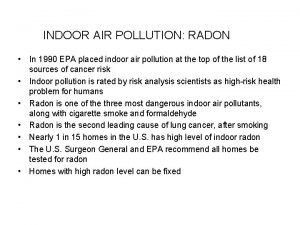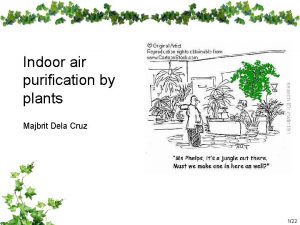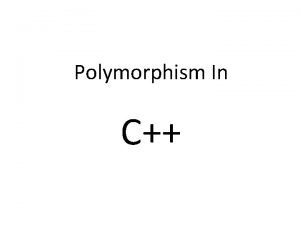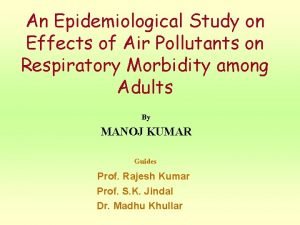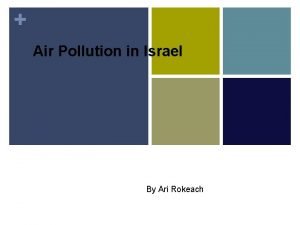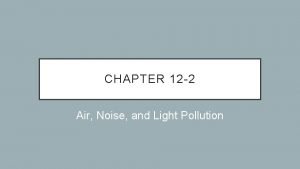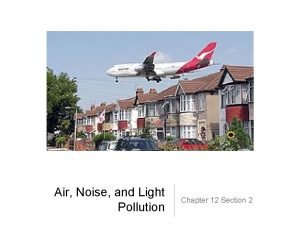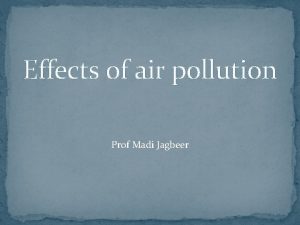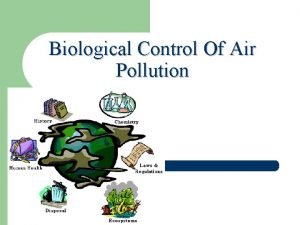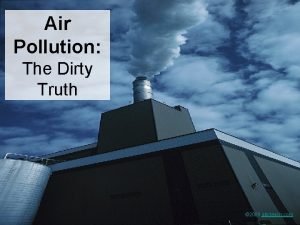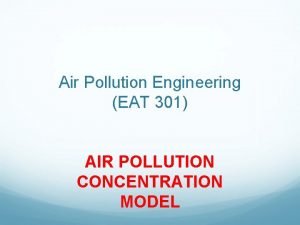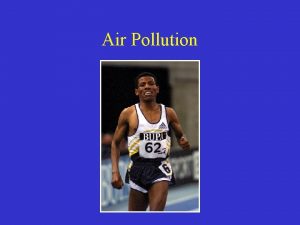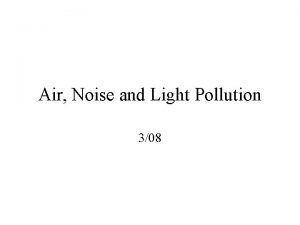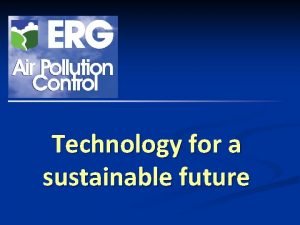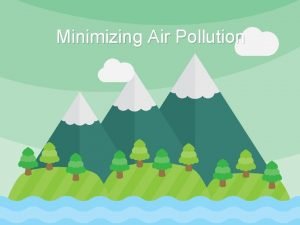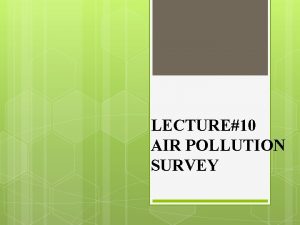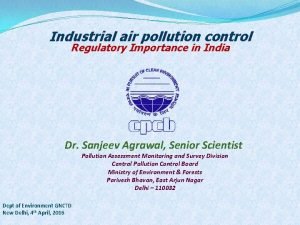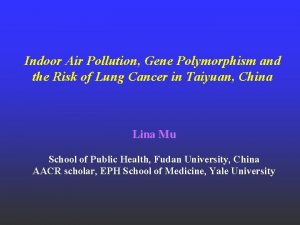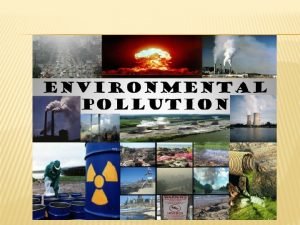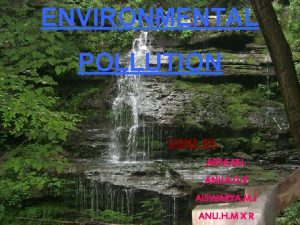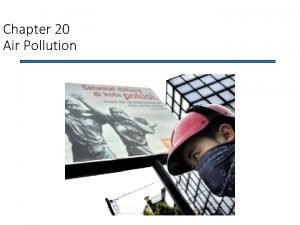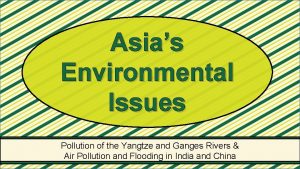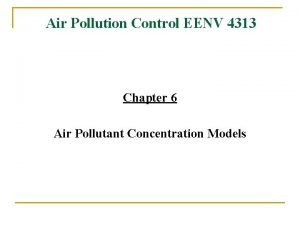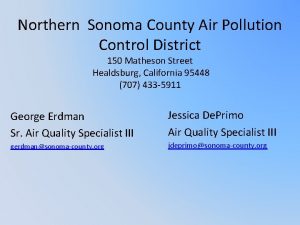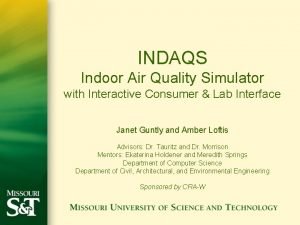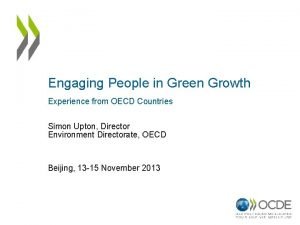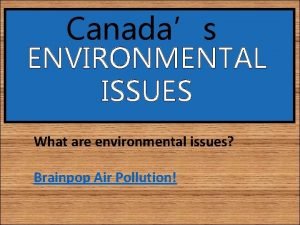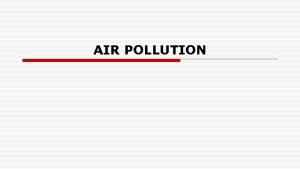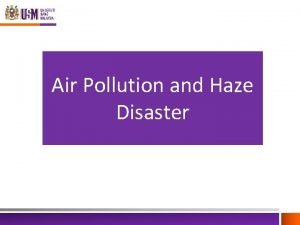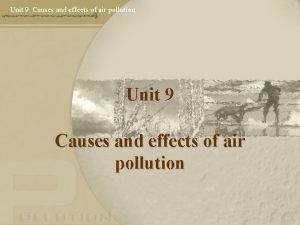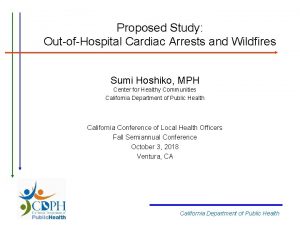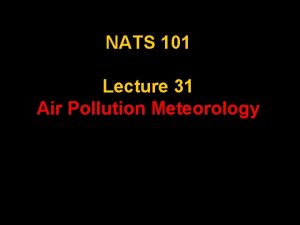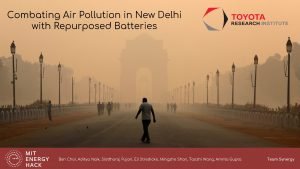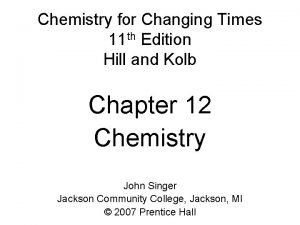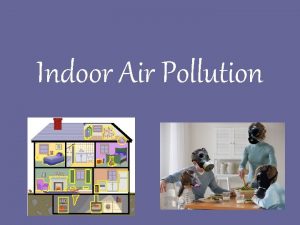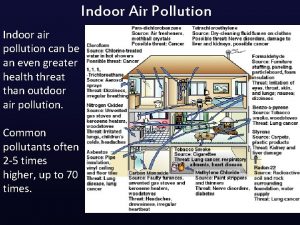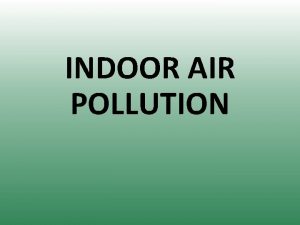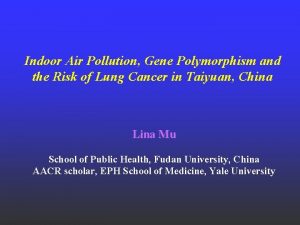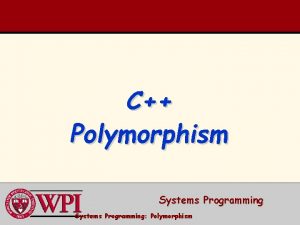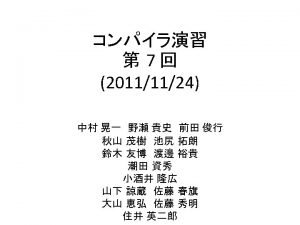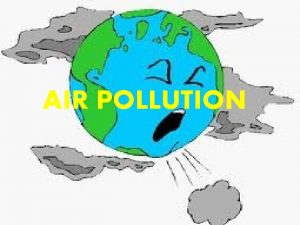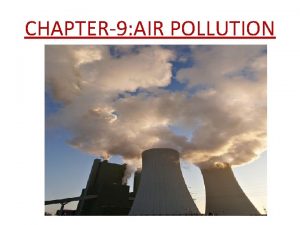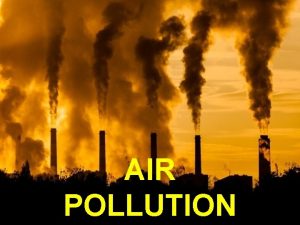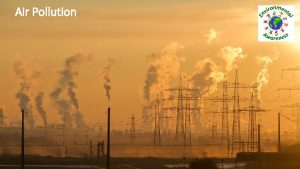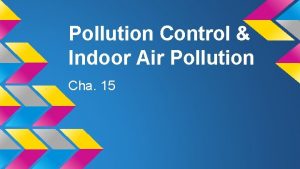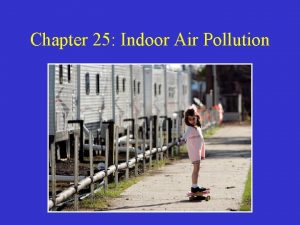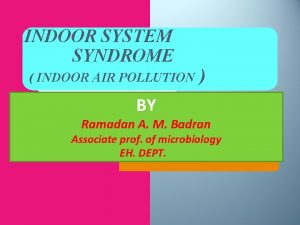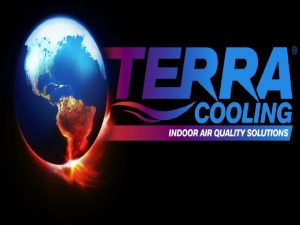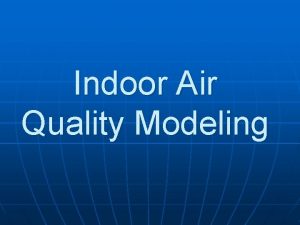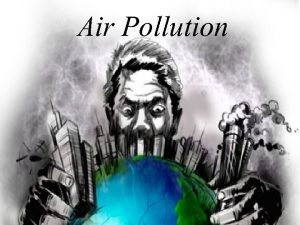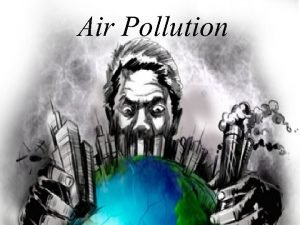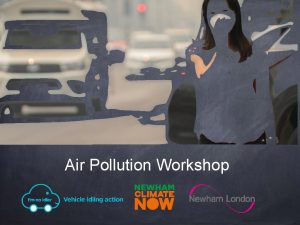Indoor Air Pollution Gene Polymorphism and the Risk
















































- Slides: 48

Indoor Air Pollution, Gene Polymorphism and the Risk of Lung Cancer in Taiyuan, China Lina Mu School of Public Health, Fudan University, China AACR scholar, EPH School of Medicine, Yale University

Tobacco smoking is considered the most important risk factor for lung cancer !! Smoking rate and lung cancer incidence not parallel Chinese Female vs US female Chinese Male vs US Male

27% 63% 22. 6% 3. 8% WHY?

Reasons: • Chinese female has special environment exposure? • Air Pollution: Indoor? • Lifestyle? • Migrant Study: Chinese vs Japanese White Hawaiian Lung cancer risk is still high!!! • • Chinese may be genetically different from US population in response to tobacco smoking and other environmental exposures?

Chinese population: North vs South • Role of cigarette smoking in lung cancer risk? • Role of indoor air pollution in lung cancer risk? • Role of gene polymorphism in lung cancer risk? • The etiological heterogeneity between two areas;

Material and Methods • A case-control study • Taiyuan City, Shanxi Province: “ Coal town” --- Major Industry: Coal, steel and Chemistry --- Outdoor air pollution: Highest TSP in the world, 1997 - World Bank SO 2: 10 times WHO guidance value --- Most frequent coal using area: --- No related study in recent years around this area Dafeng City, Jiang Su province ---Much less industry; ---Less outdoor air pollution; ---Different life style; ---less coal using;

Taiyuan Project • Cases: 399 Newly diagnosed patients with lung cancer from major cancer hospitals in this city between 2005 -2006; • Control: 512 Healthy control from same source population; • Epidemiological data were collected by in-person interview using a standard questionnaire; • Data analysis: adjustment: Age, gender, education, income, BMI and pack-year

Distribution of Leading Causes of Cancer Death in Taiyuan City, 2005 Lung Stomach Liver Esophagus Male Female Colon & Rectum Pancreas Brain and other Nervous System Breast Leukemia 0 5 10 15 20 25 30 35 40 Percentage(%)

Results-1 Smoking---Lung cancer

>100 case-control 37 cohort studies: OR: 15 -30 -A. J. Sasco 2004 9% 15% 13% 63%

Smoking and Risk of Lung Cancer With Different Histotype OR 20 18 16 14 12 10 8 6 4 2 0 ADC SCLC No <20 20 -40 >40 ADC Histology Type No <20 20 -40 >40 No SCC <20 20 -40 >40 Pack-Year SCLC Male Female Total Adenocarcinoma 43 (21. 4%) 64 (32. 5%) 107(26. 9%) Squamous Cell Carcinoma 66(32. 8%) 25(12. 7%) 91(22. 9%) Small Cell Carcinoma 26(12. 9) 31(15. 7%) 57(14. 3%) Others 66(32. 8) 77(39. 1%) 143(35. 9%)

Smoking and Risk of Lung Cancer • Smoking is still an very important risk factors in this population; • However it might be less contribution to risk of lung cancer among Chinese female.

Indoor Air Pollution

Joint effect of active and passive smoking on lung cancer Passive Smoking 10 9 8 7 6 5 4 3 2 1 0 OR A-, P- A-, P+ A+, P- A+, P+ Smoking Status Active/ Passive Cases Controls Total Crude OR Adjusted OR None Passive only Active+passive Total 41(10) 138(35) 25(6) 195(49) 399 97(19) 225(44) 37(7) 153(30) 512 138 363 62 348 911 1 1. 45(0. 95 -2. 21) 1. 60(0. 86 -2. 99) 3. 01(1. 98 -4. 60) 1 1. 45(0. 93 -2. 26) 3. 28(1. 55 -6. 97) 5. 36(3. 08 -9. 32)

Coal Using for Cooking? Coal using for Heating? Ventilation using in Kitchen?

REVIEW Coal using for cooking or heating and risk of lung cancer, Chinese Female OR 18 16 14 12 10 8 6 4 2 0 NJ 1 SY 2 GS TW HB GZ SH Kleinerman R 2002 ► Non-smoking Chinese female: OR for Coal using: 1. 42, sig ---Zhang Y 2001

Coal using for cooking or heating and Lung cancer risk, Chinese Male (&female) 18 16 14 OR 12 10 8 6 4 2 0 SCC NJ 2 CSt Cbu SY F/M HB SCC ADC FZ All G(M) F/M GZ XW GS Gas vs Coal

Cooking fuel (Coal) and risk of lung Cancer? 100 3. 5 3 2. 5 10 2 OR OR 1. 5 1 1 0. 5 0 0. 1 Elec/Gas Coal/Wood None-smoker Elec/Gas Coal/Wood Smoker Elec/Gas Coal/Wood Male Elec/Gas Coal/Wood Female

Cooking fuel and risk of lung Cancer? 4. 5 OR 4 3. 5 3 2. 5 2 1. 5 1 0. 5 0 Elec/Gas Coal/Wood ADC Elec/Gas SCC Coal/Wood Elec/Gas Coal/Wood Other

0 None smoker Smoker ADC SCC Other Male Coal/Wood Elec/Gas Coal/Wood Elec/Gas Coal/Wood Elc/Gas OR Coal Using for Heating and risk of lung Cancer? 6 5 4 3 2 1 Female

Ventilation in the kitchen and Risk of Lung Cancer 6 5 OR 4 3 2 1 0 Yes No Yes No None smoker Smoker ADC SCC Other Male Female

Indoor Air Pollution and Lung Cancer About 40%, 30% patients have the history of using coal as cooking fuel or heating materials, and 50% patients didn’t use ventilation in Kitchen in the study area. Indoor coal using exposure has much stronger association with lung cancer in female or nonesmoker; The association is more obviously between coal using indoor air pollution and adenocarcinoma;

Indoor Air Pollution and Risk Lung Cancer ●The smoke generated from incomplete combustion of these fuels contains constituents that have been identified as known or suspected carcinogens: PAHs: well known carcinogen from coal smoke; Benzo(a)pyrene: from unvented soft, smoky coal used for cooking and heating; Coal using in room=20 cigarette/day (Shanghai) Particles: ●Because of the cold weather, many windy days and outdoor air pollution in winter in North China, most family don’t open the window for a long time, maybe for the whole winter. Without Ventilation equipment, harmful compound generated from cooking and heating will accumulated and cause the increased risk of Lung cancer.

Lung cancer Exogenous carcinogens Tobacco consumption Outdoor Air pollution Indoor exposure PAHs Xenobiotics Arene Alkine, etc CYP 1 A 1 NQO 1 Occupational Exposures GSTM 1 GSTT 1 Active carcinogens NQO 1 DNA Repair Gene DNA Damage Detoxified carcinogens DNA damage repaired Normal cell not repaired M G G 2 Program med cell death S Hypomethylation Oncogene Activate Cell cycle Tumor suppress / repair Gene --Silenced Carcinogenesis Hypermethylation

Polymorphic metabolizing genes associated with lung cancer Polymorphic Human Typical Substrate Enzyme System Carcinogens or Substrate P 450 Mono-oxygenases CYP 1 A 1 Benzo[a]pyrene PAHs Oxido-Reductases NQO 1 Diaziquone Quinoids

CYP 1 A 1 and Lung Cancer CYP 1 A 1 Case Control N (%) OR(95%CI) a. OR(95%CI) M 1/M 1 184(46. 46) 214(41. 96) 1. 00 M 1/M 2 170(42. 93) 244(47. 84) 0. 81(0. 61 -1. 07) 0. 79(0. 58 -1. 07) M 2/M 2 42(10. 61) 0. 94(0. 60 -1. 48) 0. 87(0. 53 -1. 40) 52(10. 20) AOR for Adenocarcinoma: 1. 13, 0. 90 AOR For Squamous Cell Carcinoma: 0. 54, 1. 65 No interaction between CYP 1 A 1 and smoking with the risk of lung cancer

NQO 1 • NQO 1 is involved in both metabolic activation and detoxification of carcinogens; ---Prevent the formation of BP quinone. DNA adduct; ---Metabolically active carcinogenic heterocyclic amines present in smoke;

NQO 1 and Lung Cancer NQO 1 Case Control N (%) OR(95%CI) AOR(95%CI) Pro/Pro 133(33. 9) 196(41. 3) 1. 00 Pro/Ser 155(39. 5) 165(34. 7) 1. 38(1. 02 -1. 89) 1. 48(1. 06 -2. 08) Ser/Ser 104(26. 5) 114(24. 0) 1. 34(0. 95 -1. 90) 1. 41(0. 97 -2. 05) pro/ser ser/ser pro/pro Any ser ORADC 1. 00 1. 51(0. 90 -2. 55) 1. 57(0. 90 -2. 76) 1. 54(0. 96 -2. 45) ORSCC 1. 00 1. 44(0. 82 -2. 55) 0. 57(0. 27 -1. 20) 1. 05(0. 62 -1. 77)

Ser Allele(41. 4%) is similar with that reported in Chinese population

NQO 1, Indoor Air Pollution and Lung Cancer 12 10 OR 8 6 4 2 0 pro/pro Any ser 0 1 2 3 Number of exposure to indoor Air pollution factors No interaction between NQO 1 and smoking with the risk of lung cancer

DNA repair Risk of Lung Cancer Associated with Low DRC 6 In Vitro Adduct Assay (genomic DNA) Trend test : P < 0. 001 Odds Ratio 5 4 3 2 1 0 Ist High 2 nd 3 rd DRC (%) by Quartile 4 th Low Li et al, Cancer Res. , 2001 Friedberg, Nature Reviews Cancer 2001; 1: 22 -33

Human DNA Repair Pathways Gene XRCC 1 LIG 1 Type Damage Base excision repair Single base damage repair Nucleotide excision repair Bulky nucleotide damage including UV photoproducts and chemical carcinogen-induced adducts Mismatch repair Base mismatch Recombinational repair Double strand breaks V(D)J recombination

DNA Repair • XRCC 1: Base excision repair Required for the efficient repair of single-strand breaks and damaged bases in DNA; Its absence leads to a substantial reduction in the levels of its partner ligase III; Of 60 SNPs in this gene, Arg 194 Trp on exon 6, Arg 399 Gln on exon 10 are extensively studied.

XRCC 1 condon 194 Polymorphism and Lung cancer Case Control XRCC 1 N (%) Arg/Arg 164(49. 9) Arg/Trp OR(95%CI) AOR(95%CI) 282(62. 8) 1. 00 113(34. 4) 116(25. 8) 1. 68(1. 21 -2. 31) 1. 90(1. 33 -2. 72) Trp/Trp 52(15. 8) 51(11. 4) 1. 75(1. 14 -2. 70) 1. 96(1. 21 -3. 16) Any Trp 165(50. 2) 167(37. 2) 1. 70(1. 27 -2. 27) 1. 81(1. 32 -2. 48) No difference over histotype

25. 8%, 11. 4% Hung RJ American Journal of Epidemiology, 2005

Smoking, XRCC 1 194 and Lung cancer OR 5 4 3. 5 3 2. 5 2 1. 5 1 0. 5 0 S-, Arg/Arg S-, Arg/Trp S-, Trp/Trp S+, Arg/Arg S+, Arg/Trp S+, Trp/Trp

Indoor Air Pollution, XRCC 1 194 Polymorphism and Lung Cancer 30 25 OR 20 15 10 5 0 Arg/Arg Any Trp 0 1 2 3

XRCC 1 condon 399 polymorphism and Lung cancer Case Genotype N(%) Control N(%) OR(95%CI) AOR(95%CI) 1. 00 Arg/Arg 161(48. 8) 227(47. 8) Arg/Gln 119(36. 1) 202(42. 5) 0. 83(0. 61 -1. 13) 0. 86(0. 62 -1. 20) Gln/Gln 50(15. 2) 46(9. 7) 1. 53(0. 98 -2. 40) 1. 59(0. 97 -2. 60)

42. 5% 9. 7% Hung RJ American Journal of Epidemiology, 2005

Kiyohara C, Lung Cancer, 2006

XRCC 1 399 and lung cancer Meta-analysis Kiyohara C, Lung Cancer, 2006

Smoking, XRCC 1 399 and Lung Cancer Smoking No Yes Genotype Case Control N(%) Crude OR(95%) AOR(95%CI) Arg/Arg 45(13. 6) 93(19. 6) 1. 00 Arg/Gln 39(11. 8) 91(19. 2) 0. 89(0. 53 -1. 49) 1. 06(0. 62 -1. 82) Gln/Gln 15(4. 6) 25(5. 3) 1. 24(0. 60 -2. 58) 1. 50(0. 70 -3. 22) Arg/Arg 116(35. 2) 134(28. 2) 1. 79(1. 16 -2. 76) 2. 65(1. 57 -4. 46) Arg/Gln 80(24. 2) 111(23. 4) 1. 49(0. 94 -2. 35) 2. 30(1. 35 -3. 92) Gln/Gln 35(10. 6) 21(4. 4) 3. 44(1. 80 -6. 58) 5. 00(2. 43 -10. 30) 5 4 3. 5 3 OR 2. 5 2 1. 5 1 0. 5 0 S-, S-, S+, S+, Arg/Arg Arg/Gln Gln/Gln

LIG 1 and Lung Cancer • Nuclear Enzyme; • Be required for joining Okazaki fragments during DNA replication and sealing singlestrand breaks; • Be involved in both nucleotide excision repair and long-patch base-excision repair; • Mutations in LIG 1 results in hypersensitivity to DNA-damaging agents.

LIG 1 and Lung Cancer Case Genotyp N (%) e Control N (%) OR(95%CI) 1. 00 A/A 192(48. 73) 265(51. 86) A/C 181(45. 94) 218(42. 66) 1. 15(0. 87 -1. 50) 1. 07(0. 80 -1. 44) C/C 21(5. 33) 28(5. 48) 0. 70(0. 35 -1. 42) 1. 04(0. 57 -1. 88) No difference over histotype No interaction between LIG 1 and smoking with the risk of lung cancer

Summary • Increased risk of lung cancer associated with NQO 1 polymorphism. • Polymorphisms in this gene might modify the association between carcinogen in indoor air pollution and lung-cancer risk.

Summary • DNA Repair gene XRCC 1 polymorphism might be associated with increased risk of lung cancer; • XRCC 1 might modify the effect of smoking, indoor air pollution and increase the risk of lung cancer;

Acknowledgements Fudan University Shunzhang Yu Jia Su Jiawei Li Guorong Wei Chuanwei Chen Taiyuan CDC Li Liu Jianping Shi Baoxing Zhao UCLA Zuofeng Zhang Shun-Chun Chuang Yifang Zhu Shanxi Tumor hospital Ruigui Niu Xiao. You Han

Thanks!
 Indoor air pollution examples
Indoor air pollution examples Radon indoor air pollution
Radon indoor air pollution Prevention of indoor air pollution
Prevention of indoor air pollution Indoor air pollutants
Indoor air pollutants What is polymorphism
What is polymorphism Section 1: what causes air pollution answer key
Section 1: what causes air pollution answer key Chapter 12 air section 1 what causes air pollution
Chapter 12 air section 1 what causes air pollution Gene by gene test results
Gene by gene test results Chapter 17 gene expression from gene to protein
Chapter 17 gene expression from gene to protein Credit risk market risk operational risk
Credit risk market risk operational risk Pt tanah air sentosa
Pt tanah air sentosa Effect on human health of land pollution
Effect on human health of land pollution Soil pollution images diagram
Soil pollution images diagram Aim and objectives of air pollution
Aim and objectives of air pollution Primary pollutant vs secondary pollutant
Primary pollutant vs secondary pollutant Ari rokeach
Ari rokeach Aim and objectives of air pollution
Aim and objectives of air pollution Section 2 air noise and light pollution
Section 2 air noise and light pollution Section 2 air noise and light pollution
Section 2 air noise and light pollution Controlling measures of noise pollution
Controlling measures of noise pollution Introduction of pollution
Introduction of pollution Air pollution effects on plant
Air pollution effects on plant Air pollution contents
Air pollution contents Main cause of air pollution
Main cause of air pollution Air pollution box model example
Air pollution box model example General effects of air pollution
General effects of air pollution Air pollution consequences
Air pollution consequences Erg (air pollution control) ltd
Erg (air pollution control) ltd Air pollution
Air pollution Objectives of air pollution
Objectives of air pollution Slogan on air pollution
Slogan on air pollution Air pollution
Air pollution Air pollution class 9
Air pollution class 9 Air pollution intro
Air pollution intro Sources of smog
Sources of smog 5 effects of air pollution
5 effects of air pollution Air pollution control engineering noel de nevers solution
Air pollution control engineering noel de nevers solution Northern sonoma county air pollution control district
Northern sonoma county air pollution control district Air pollution simulator
Air pollution simulator Air pollution 2050
Air pollution 2050 Brainpop air pollution
Brainpop air pollution Air pollution control methods
Air pollution control methods Air pollution
Air pollution What is pollution how is it caused
What is pollution how is it caused Air pollution wildfires
Air pollution wildfires Air pollution
Air pollution Air pollution
Air pollution Air pollution
Air pollution Air pollution wildfires
Air pollution wildfires

